Lifestyle
Bearaby Tree Napper Review: Is It Worth $299?
Published
4 years agoon

Weighted blankets have gained popularity in recent years for their therapeutic benefits. What used to be therapy for those with anxiety and autism has now become widely available. Weighted blankets come in all shapes, sizes, and price ranges. However, most are the same. They’re simply blankets – weighted with a heavy material, typically beads.
Bearaby introduces an entirely new concept, the Bearaby Tree Napper, a weighted knitted from eucalyptus trees. Like Bearaby’s other weighted blankets, the Tree Napper gets its weight completely from the construction materials instead of relying on beads. It’s a unique concept that’s both innovative and socially responsible. However, is it worth the asking price?
What’s a weighted blanket?
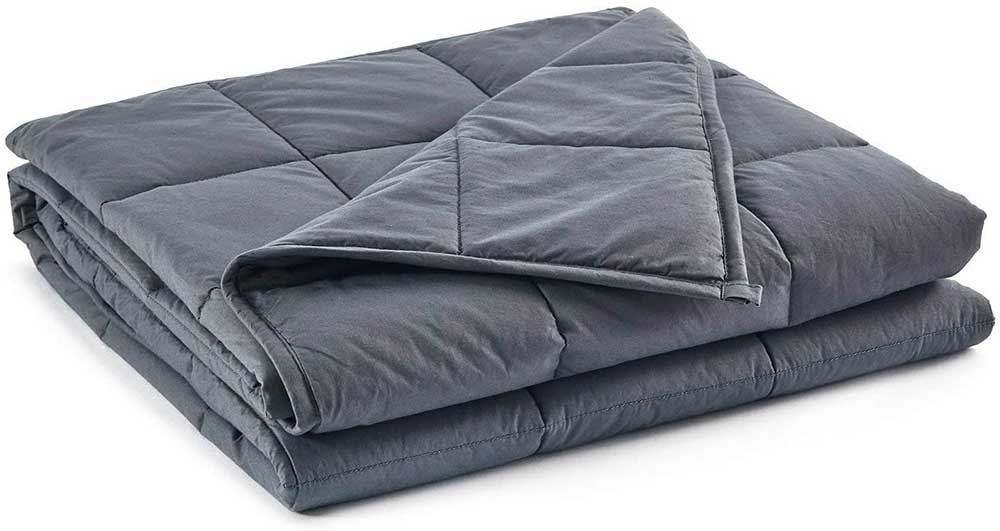
First, let’s start by explaining what exactly a weighted blanket is. It’s a blanket that uses either beads or dense materials to give it a weight between 15 – 30 lbs. The weight is often evenly distributed across the blanket, so the pressure is applied equally. Research has shown that deep pressure stimulation has shown to reduce anxiety and stress. Ever wonder why a massage feels so good afterward?
Weighted blankets offer similar therapeutic effects by wrapping you underneath a 15 – 30lbs blanket. Several studies have shown that frequent use of weighted blankets can also help with chronic pain, osteoarthritis, insomnia, and even ADHD.
What makes Bearaby unique?
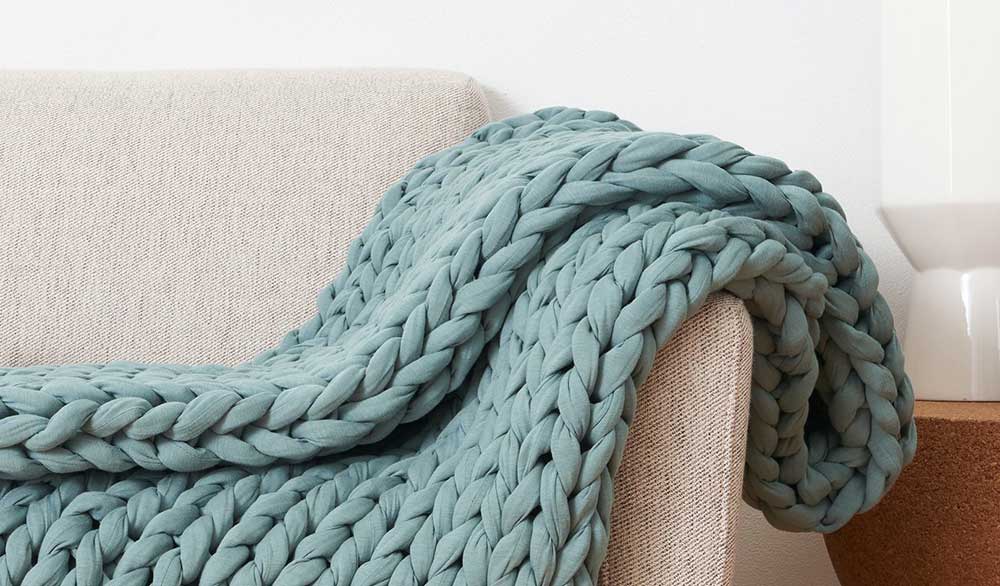
Most weighted blankets get their weight from tiny beads evenly quilted into the lining. This method certainly does work to give the blanket its weight, but you’ll often feel like you’re under a sandbag. The Bearaby Nappa is unlike any other weighted blanket. It gets its weight naturally from the dense cotton strands knitted together. This design choice gives the blanket a cohesive structure that’s both flexible and durable. It can stretch and take a bit of abuse. However, it’ll never lose its shape.
One significant advantage of Bearaby’s unique design is that it doesn’t sacrifice comfort for weight. Traditional weighted blankets rely on noisy beaded pockets, and that can often be uncomfortable. The Bearaby’s soft tencel knits are comfortable, soft, and have a natural silk-like texture that makes them cool to the touch.
Are Bearaby Weighted Blankets Washable?
Yes, thanks to 100% of the weight coming from the fibers, all Bearaby blankets, including the Tree Napper, are machine washable. Traditional weighted blankets are much more complicated to wash due to the beads being interlocked in pockets. Machine washing and drying could cause damage to the covering or, worse, to the washing machine should the pockets rupture.
What is Bearaby made of?
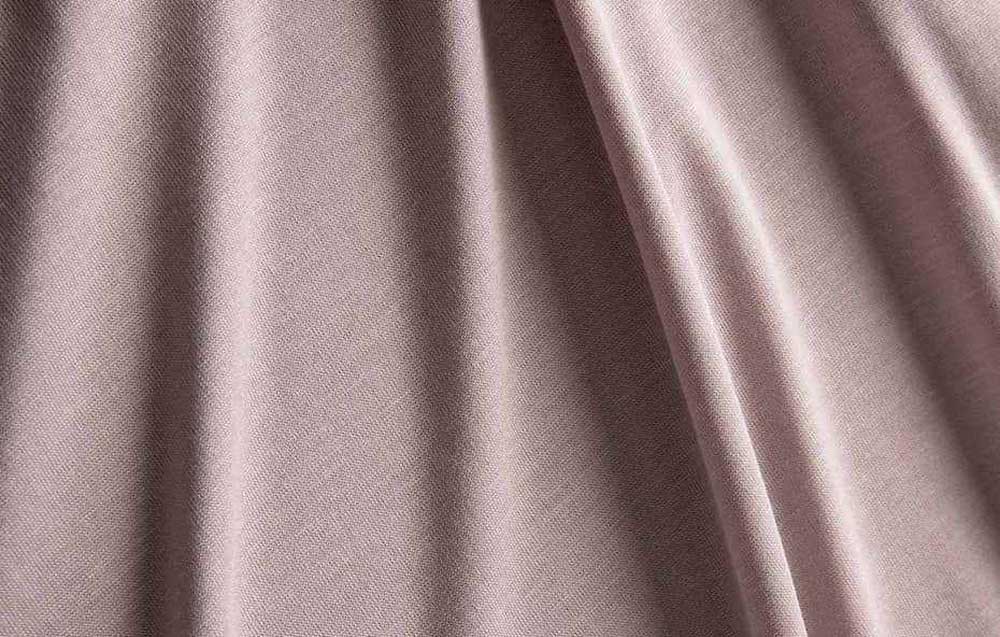
It never fails to draw attention. The Bearaby’s unique look is both captivating and functional. Tencel is claimed to be softer than silk and more relaxed than linen. I can confirm its effectiveness by sleeping with the Bearaby for the past month in 80-90 degree weather. The knits allow me to sleep much cooler than a regular comforter.
Because 100% of the weight comes from the cotton itself, the distribution is more even across my body, giving me the feeling of being hugged rather than held down.
The look & feel

It never fails to draw attention. The Bearaby’s unique look is both captivating and functional. Tencel is claimed to be softer than silk and cooler than linen. Sleeping with the Bearaby for the past month in 80-90 degree weather, I can confirm its effectiveness. The knits allow me to sleep much cooler than a regular comforter.
Because 100% of the weight comes from the cotton itself, the distribution is more even across my body, giving me the feeling of being hugged rather than being held down.
A socially responsible company
Bearaby promises all of its products are sourced responsibly in a closed-loop process that uses 90% less water than traditional fabrics. Their products, including the Tree Napper, are biodegradable and have received sustainability certifications to back up their claim.
It’s easy for brands to claim their sustainability badge by promising to donate money for every purchase. Bearaby does something that few are willing to do – changing their manufacturing practice. It’s not a flashy promise, but it’s an expensive choice with the most significant impact on our environment. This practice alone more than justifies Bearaby’s price tag.
Bearaby’s price
We recommend any Bearaby weighted blankets because it’s a fantastic health product that can add years to your life. Any benefits traditional weighted blankets offer, the Bearaby simply offers more.
The Bearaby Tree Napper starts at $269 for the 15lbs version and goes up to $299 for the 25lbs version. It’s easily one of the most expensive weighted blankets on the market. However, considering the materials, sustainable practice, and fair wages they offer their staff, it’s well worth the price. You’re buying more than just a blanket. You’re supporting a company that takes care of their people and environment.
You may like
Top 10 Public Relations Tools Every Entrepreneur Should Check Out
What the Hell Was Magic Dirt? The Black Oxygen Organics Hoax
Unlimited Graphic Design Companies Of 2025 + Promo Codes (Updated)
What’s the Best Creative Design Company for you?
What’s the Best Subscription-Based Graphic Design Service in 2025?
What’s the Best Unlimited Graphic Design Services Agency in 2025?
Lifestyle
What the Hell Was Magic Dirt? The Black Oxygen Organics Hoax
Published
16 hours agoon
September 11, 2025
It has been years since we experienced the bizarre that was the pandemic, and yet, shady schemes still abound in the form of MLM (multilevel marketing) related to it. If you’ve ever heard or seen Magic Dirt, you’re not alone in wondering what it is all about.
While we’re now in the era of AI breakthroughs, space tourism, and wearable brain tech, some people still seem to be stuck in the horrid past. Sellers are peddling literal dirt as a miracle health product. Promoted mainly by anti-vax influencers and conspiracy circles, this dirt they call “wellness solution” was sold with pseudoscience, fear tactics, and a generous dose of misinformation.
And yes, it was an MLM. Because of course it was.
Here’s the breakdown of the Magic Dirt controversy—just one of many reasons why multi-level marketing schemes continue to be a red flag for anyone with a functioning sense of skepticism.
Planting The Seeds
It all began in May of 2021 when we were finally getting into the rhythm of our “new normal.” Of course, health was a significant topic of discussion in the media. It’s no surprise that many alternative medicines are gaining popularity on social media. It was during this month that a peculiar brand emerged on the scene. Depictions began circulating with smiling women slathering black mud on their faces, drinking jars of black liquid, and placing their babies’ feet in a tub of black water.
In the captions, they listed the numerous benefits of using this new “magic dirt.” And of course, the benefits varied from person to person. You might read one post that credits the dirt with curing her child’s low energy and constipation. Then you might scroll on to read another post claiming that it rejuvenates the skin while calming anxiety.
One thing these posts had in common was that they contained the hashtag #BOO while providing a shoutout to the company Black Oxygen Organics.
So, what does Black Oxgen Organics have to say about their “magic dirt”? As a brand, they described their product as,
“the end product and smallest particle of the decomposition of ancient, organic matter.”
Yeah, it’s purposely vague. In short, Magic Dirt is supposed to be a form of fulvic acid. This is a compound derived from the decayed plants of an Ontario peat bog. Sounds super rejuvenating, right?
To be fair, fulvic acid is shown to help with allergies and gastrointestinal function. But as with your average MLM, Black Magic Organics has exaggerated these benefits to the tenth power. They’ve taken these benefits and used them to sell 4.5 ounces of literal dirt, sealed in a fancy black bag and stamped with a $110 price tag. And if that didn’t feel like a slap in the face already, this stuff didn’t even come with free shipping!
Magic Dirt is claimed to be safe for anyone of any age. This includes your children and your pets. It’s been said to help heart health, brain function, and pretty much every common health problem in the world.
Of course, with it being 2021 and all, it started getting sent around to anti-vax and COVID-sceptical groups. Instead of seeking treatment for a deadly virus, people were mixing mud into their smoothies and calling it a day.
The Immediate Downfall
As Instagrammers and TikTokers promoted this “cure-all” product, an alarming number of women were eager to become direct sellers. For many, this company was their first introduction to the notorious Multi-Level-Marketing schemes.
That is, until the professionals got involved. You see, Magic Dirt was not at all FDA approved. And when health regulators from the U.S. and Canada became aware of its popularity, they conducted an investigation. They called for multiple product holds at the border, which in turn gave rise to an army of online skeptics.
And in typical MLM fashion, Black Oxygen Organics took their money and ran for the hills. Only about six months after its initial success, the company announced that it was officially shutting down. This sparked a significant backlash from online sellers. They grieved the end of miracle supplements, while also petitioning to recover the thousands they had invested in direct selling.
Unfortunately, most victims of these schemes will likely never recover their money.
The fact of the matter is that Black Oxygen Organics and similar companies are based on a scam. Period. That’s what everyone needs to remember, so they can avoid making the same mistakes as so many others. Always be vigilant for predatory companies.
Lifestyle
These Anti-MLM Communities Are Saving People from Scams
Published
1 month agoon
July 31, 2025
Have you ever stumbled upon an MLM online community? If your answer is no, you’re lucky. But if you did, you’d know that they can be a breeding ground for toxicity. Fortunately for some, a new wave of anti-MLM communities has emerged and is giving the much-needed breath of fresh air.
These communities include people who use their platforms to warn us about these dangerous schemes. They also provide a support system for those who are still enmeshed in it and trying to find a way out.
If you’re one of the unlucky ones trying to escape or are just curious, check out these four anti-MLM communities that are saving people from scams.
r/antiMLM

I just love Reddit. It provides a window into just about any subculture, no matter how obscure, and connects you with like-minded people from around the globe. It’s honestly the easiest place to find communities with shared interests.
r/antiMLM is just one of the many communities Reddit has to offer. People will post discussions, pictures, and screenshots showcasing the horror of MLMs. The content ranges from lighthearted and funny, to downright sad. Either way, everyone here has the same idea: MLMs are harmful and predatory. Should anyone come across this subreddit, they’ll be way less likely to fall for a pyramid scheme. And by subscribing to said subreddit, they are nearly eliminating all possibilities of going anywhere near an MLM. Subscribers of r/antiMLM are familiar with popular MLM companies, their tactics, and the red flags within the direct marketing industry. They are quicker to identify this type of scam.
The Anti-MLM Coalition

This website is an absolute GODSEND. The Anti-MLM Coalition is an incredible organization filled with educational materials and various resources. You can tell from the homepage alone that they mean business.
The menu bar provides 8 main website pages. The “Homepage “is filled with their latest articles and a search bar to navigate. “MLM Master List” is exactly what it sounds like: a list of all the known MLM companies in existence. The “MLM or Not?” page brings users to a long article detailing how to spot your typical pyramid scheme.
“Get Help” is a page filled with helpful information. It’s for people who have a loved one trapped in an MLM, or people who wanna take action against these companies. Each link leads to a detailed article on the subject.
The “Resources” page is a shoutout to various authors, YouTubers, and documentaries. It helps anyone who’s trying to do further research. They have a page dedicated to a very shareable infographic; a great tactic to spread the word around fast.
The “Activism” page provides a guideline on where and how to take action. They recommend printing cards, reporting, and exposing MLM corporations on social media. The more buzz, the better.
And of course, they have a “Contact” page in case you need to get in touch.
MLM Lies Exposed

Looking for more places to discuss your anti-MLM sentiments? Or just looking for general help without the hassle? Well, here’s the biggest anti-MLM Facebook group. MLM Lies Exposed is an invite-only community with over 30,000 members. It’s a lot like r/antiMLM, in that you can post things involving the false promises and skeevy behavior behind MLMs. I’d recommend this page to anyone who’s more familiar with Facebook or finds it easier to navigate than Reddit.
Anti- MLM Youtube

Now, hear me out. This is not an official community, but if you’re a regular on YouTube, you’ll know that there are different genres of videos. And each of these genres has garnered its own distinct communities.
They’re kinda like cliques. You’ve got gamer bro YouTubers at one table, and you’ve got beauty influencers at another table. You’ve got commentary YouTubers sitting somewhere near the true crime YouTubers and the podcast channels. Somewhere in the corner, you’ve got the anti-MLM spaces. These YouTubers dedicate their channels to spreading awareness about MLMs and other shady corporate behavior.
Popular YouTube channels include Hannah Alonzo, iilluminaughtii, NOT THE GOOD GIRL, and Kiki Chanel
MLM companies often pretend to be a revolutionary force changing the world and their own lives. In truth, they’re just making their distributors continue a cycle of unhappiness and financial ruin. These are the communities that help people who’ve been duped by these false hopes to move on with their lives.
Lifestyle
Should I Buy an Electric Scooter? What You Can Learn
Published
2 months agoon
July 18, 2025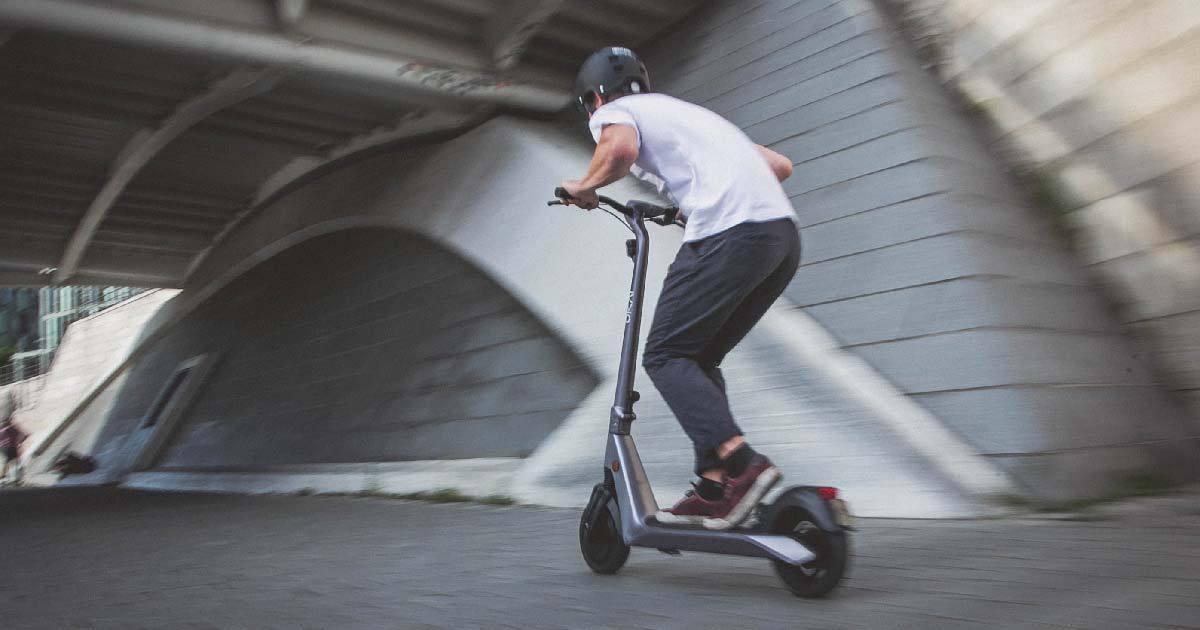
Have you wondered if buying an electric scooter for short rides is a worthwhile investment? As more people and communities turn to alternative transportation, the shift is often driven by a desire to reduce their carbon footprints and enjoy added convenience. This growing trend has many asking the question, “should I buy an electric scooter?” From electric bikes to unicycles, there’s a lot you can learn and gain when choosing an e-scooter for your daily commute.
Learning to ride a scooter is easy
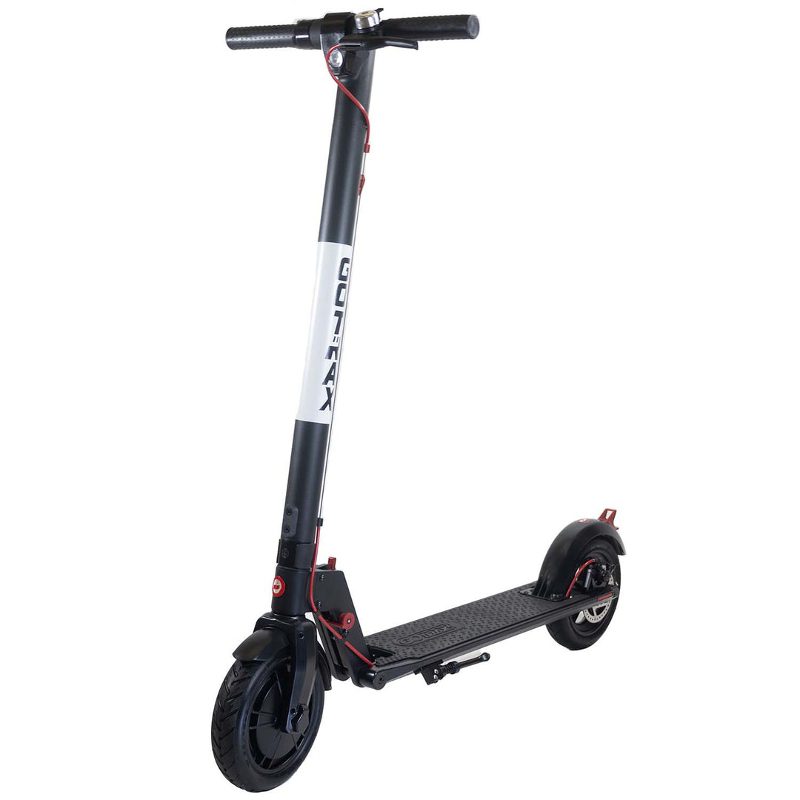
To learn how to ride your electric scooter is surprisingly easy. The learning curve is so low you can start cruising down the road in a short time. The Gotrax GXL V2 e-scooter is a good choice for beginners. It is affordable at just around $349 and can get you to work and back in a single charge. If you’re wondering whether you should buy an electric scooter, this model is a great place to start.
Once you finish the easy assembly and four-hour charging, you can already use it. It has the usual handbrake and bell on the left side. On the right sits a thumb throttle which you simply turn to gain speed and keep your balance.
You should lower your speed when stopping. This is because the higher your speed is when braking will result in the tires wearing out quickly. You will then need maintenance which can be expensive.
Turing is easy, but you need to do it with care. With both hands on the handlebars, signaling may not be possible. This is why many high-end e-scooters have features with light-up signals for this purpose.
Get additional but helpful features
Some considerations include features such as the signal lights mentioned above, suspensions, thicker tires, or more powerful motors. These will help you navigate bumpy roads, steep inclines, and uneven terrain.
When buying e-scooters, you should also consider the battery, waterproofing of the scooter, or portability. These are investments that can make your rides safer and more comfortable.
Consider your city’s laws
Before buying that electric scooter, check out your town or city’s laws about speed limits or the use of these EVs in general. Most budget-friendly scooters can travel up to25 km/h, but it’s still a good idea to know what your limitations are to prevent problems with the law.
Nighttime riding can also be a cause for concern if you plan on doing much of it. You may have to invest in headlights and reflectors to safely enjoy riding at night. You can also get helmets that already have lights and reflectors on them.
An electric scooter is faster and fun
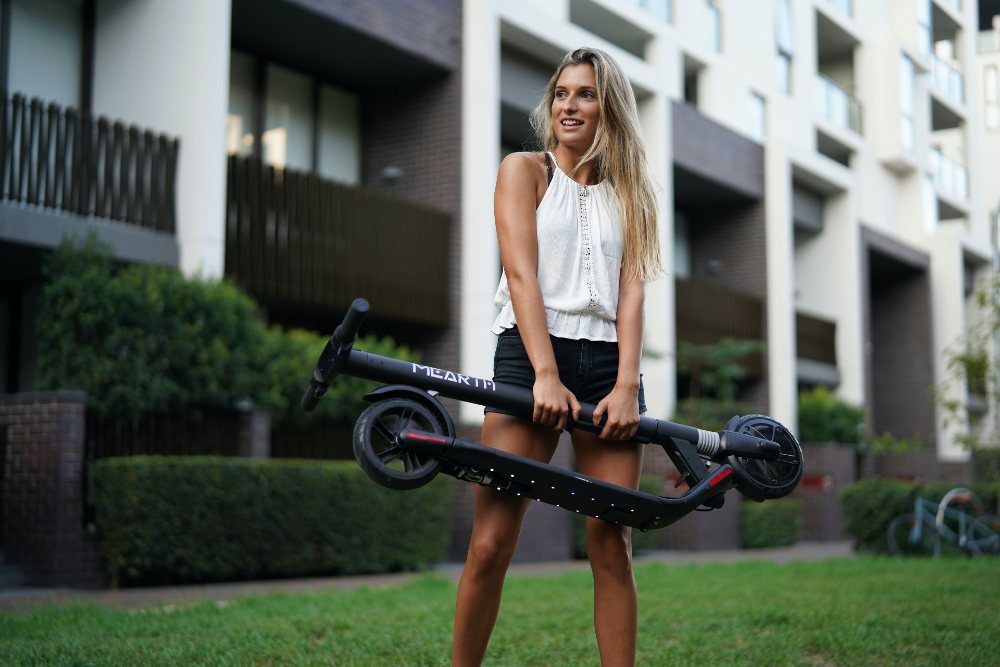
Not only will you see huge savings on gas, but you’ll also be enjoying your rides with an electric scooter. These may be the two main reasons the EV craze has hit many towns and cities. The feel of the wind on your whole body while on it gives an exhilarating feeling that driving a car won’t ever duplicate.
Getting out of traffic quickly and efficiently is also a perk of having to ride an e-scooter. If you don’t have a lot to carry, an e-scooter is the best mode of transportation for short rides. However, you can also opt for a bag attachment that will allow you to bring a few items and small cargo when riding.
You’ll be addicted to it
Be warned: casual riding in your electric scooter can be addicting and leave you wanting more. This may be the exact reason add-ons are popular, while upgrading to higher-end models seems to be the norm for some people. After a few rides, you would see yourself wanting to get a particular feature and opting for more power and speed. So, as an answer to the question, should I buy an electric scooter? You should say yes!

Top 10 Public Relations Tools Every Entrepreneur Should Check Out

What the Hell Was Magic Dirt? The Black Oxygen Organics Hoax

Unlimited Graphic Design Companies Of 2025 + Promo Codes (Updated)

What’s the Best Creative Design Company for you?

What’s the Best Subscription-Based Graphic Design Service in 2025?

What’s the Best Unlimited Graphic Design Services Agency in 2025?

Top 10 Shipping Software Options for Businesses

Unlimited Graphic Design Companies Of 2025 + Promo Codes (Updated)

Top 10 Pet Tech Products That Redefine How We Care for Pets

What the Hell Was Magic Dirt? The Black Oxygen Organics Hoax

Is This Business an MLM? The Color Street Reviews

Top 10 Public Relations Tools Every Entrepreneur Should Check Out

Top 10 Shipping Software Options for Businesses

Top 10 Customer Service Software Tools Every Business Needs Today
Trending
- Business16 hours ago
Unlimited Graphic Design Companies Of 2025 + Promo Codes (Updated)
- Lifestyle16 hours ago
What the Hell Was Magic Dirt? The Black Oxygen Organics Hoax
- Business6 hours ago
Top 10 Public Relations Tools Every Entrepreneur Should Check Out
- Business3 days ago
What’s the Best Unlimited Graphic Design Services Agency in 2025?
- Reviews3 days ago
What’s the Best Subscription-Based Graphic Design Service in 2025?
- Business2 days ago
What’s the Best Creative Design Company for you?






